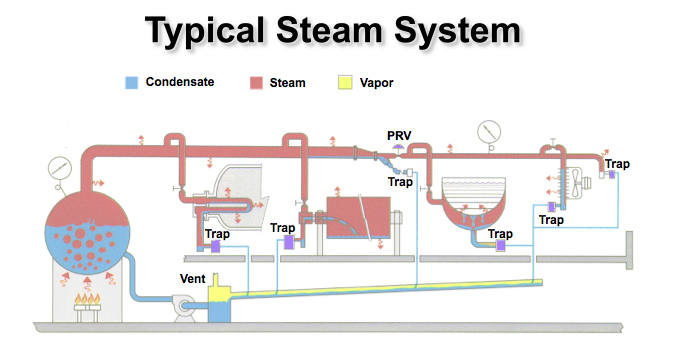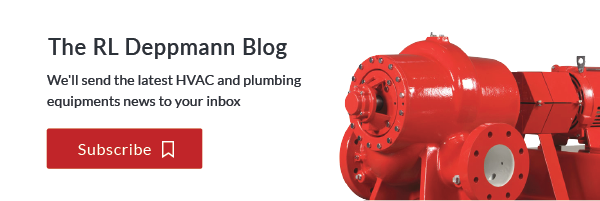Follow this step by step below to improve the energy efficiency of steam systems.
1. Make sure boiler is clean
- The water in the boiler must be free of oil and impurities
- If not addressed this will cause short cycling and wet steam
2. Gauge glass indicators
- Note if the water is bouncing rapidly or violently
- Oil in the water causes burner to short cycle on and off from low water
3. Gauge glass indicators
- See if water is dripping down from top of gauge glass
- Wet steam does not heat as well as dry and burner runs longer to satisfy call for heat
4. Make sure main steam vents are installed & working properly
- Main steam vents are full of air at startup and that air must be released from the pipe so that steam can move freely to the last riser
- The burner may short cycle on the steam pressure operating control
5. Check the steam pressure operating control setting
- Lower steam pressure costs less than higher steam pressures
- Operate as low as possible for efficiency
6. Check water line position
- If set too high, there is more water than the burner is designed to heat
- If set too low, the burner will short cycle on the low water cutoff
- Will result in poor steam production and higher operating costs
7. Check main vent(s) size
- The bigger the opening in the main vent, the faster the system will heat the radiators and the less the burner runs
- Calculate the amount of air in the lines, then install enough venting to pass that quantity
8. Check near boiler piping for proper size and orientation
- This must be right to get dry steam
- Undersized piping creates higher velocities, which can carry water out of the boiler. Follow the installation instructions
9. Check the amount of combustion air available to the burner
- The burner must have enough primary, secondary and excess air for optimal performance
- This applies to any fossil fuel heating appliance
10. Perform combustion analysis to fine-tune burner
- Record results so they can be compared
- Prove to yourself and your customer that the burner is operating at peak
11. Insulate/Reinsulate all supply piping, including rear boiler
- Reducing the greatest heat loss starts with the piping
- This may be the best investment to reduce fuel costs and short cycling
12. Make sure ALL radiator valves are fully open or closed
- Partially closed valves slow condensate return
- This leads to flooding problems
13. Replace radiator vents throughout system with one common size
- Same size port proportions the steam flow
- Will result in even heating of radiators
14. Make sure all radiator traps are working correctly
- Traps failed open are wasting steam and uneven heating
- Results in even heating and shorter run cycles
Follow these steps and you will be able to improve the operation and performance of STEAM equipment.
Download the 14 Steps to Peak Performance & Efficiency in Steam Heating Systems
For a complete listing of Boiler and Water Heater products, please visit the Boiler and Water Heater section of the R. L. Deppmann Website. Questions? Call our Service Department at 800.589.6120 or complete our contact form.


